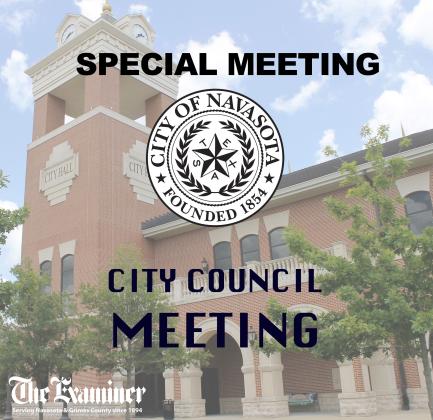Dangerous animals, impact fees workshop
In a Special Meeting workshop of the Navasota City Council Monday, July 25, council received an overview of the proposed new ordinance related to aggressive and public nuisance dogs presented by Interim Police Chief Mike Mize.
The ordinance review, prompted by changes in state law and complaints from citizens about animal attacks, was performed by Mize, City legal counsel Cary Bovey and Municipal Court Judge Pat Gruner. The workshop allowed council input before placement on a future agenda for approval.
City Manager Jason Weeks referred to Section 2.07 and said, “Basically, when you look at the ordinance, the entire 2.07 Dangerous, Aggressive and Public Nuisance Dogs is all new.”
According to Mize, definitions were redefined and address attacks of dogs attacking other animals or attacks of animals other than dogs and will allow the City to take action. One notable change is the increase in the maximum penalty from $200 to $2,000.
Section 2.07 includes the definitions of dangerous, aggressive and public nuisance dogs, the determination process, violations and attacks that cause death or serious bodily injury, the requirements for owners of these types of dogs as well as penalties for non-compliance which include removal from the City.
Mize noted the addition of vicious animals which might not be dogs and attacks on domestic animals such as the deadly dog attack on the Rent-A-Ruminant goat clearing Cedar Creek vegetation.
The City will provide free City-designed tags and signage for aggressive dogs and determine where the sign must be posted. Animal Control will maintain a database available to NPD of all dogs deemed to be dangerous, aggressive and public nuisances.
Impact fees 101
Council also received a presentation from Engineer Jeff Whitacre with Planning and Design Engineering Consultants, Kimley-Horn, regarding the use of impact fees to fund new infrastructure. Impact fees are a onetime fee assessed by the developer for future development and relieve existing taxpayers for paying for growth. Whitacre emphasized that the purpose of impact fees “is not to collect revenue but to build projects.”
The presentation included a brief history of how Texas infrastructure was funded until impact fees were approved through Chapter 395 of the Texas Government Code in 1987 which allows fees for roads, water, wastewater and drainage.
Impact fees are considered equitable for developers whether first or last to develop, predictable in that the fee schedule can be available online and state law assures accountability that funds are used within the timeline or returned. They’re directly related to the demand generated and provide city sustainability in future development.
Engineers determine “the maximum assessable impact fee” based on land use, population projections and Master Plan infrastructure requirements. City council establishes the actual fee. Components determining service units could include vehicle-miles for road improvements or water meter size for water and wastewater projects.
Of 14 cities contacted regarding the use of impact fees, the cities of Bastrop, College Station, Sealy and Waller have implemented impact fees for water and sewer. College Station also charges road impact fees. Sealy’s impact fees also apply to infill housing.
While Brenham is considering adoption, at present, the cities of Brenham, Bryan, Conroe, Hempstead, Huntsville, Madisonville and Schulenburg do not charge impact fees.
Regarding comments about impact fees, Bastrop focuses on services rather than developer concerns, College Station receives frequent complaints and pushback from developers and Conroe thinks impact fees send a message that a city is not development-friendly. Fulshear, LaGrange and Tomball did not respond.
View city council meetings in their entirety at www. navasotatx.gov/city-council/ pages/meeting-videos.

